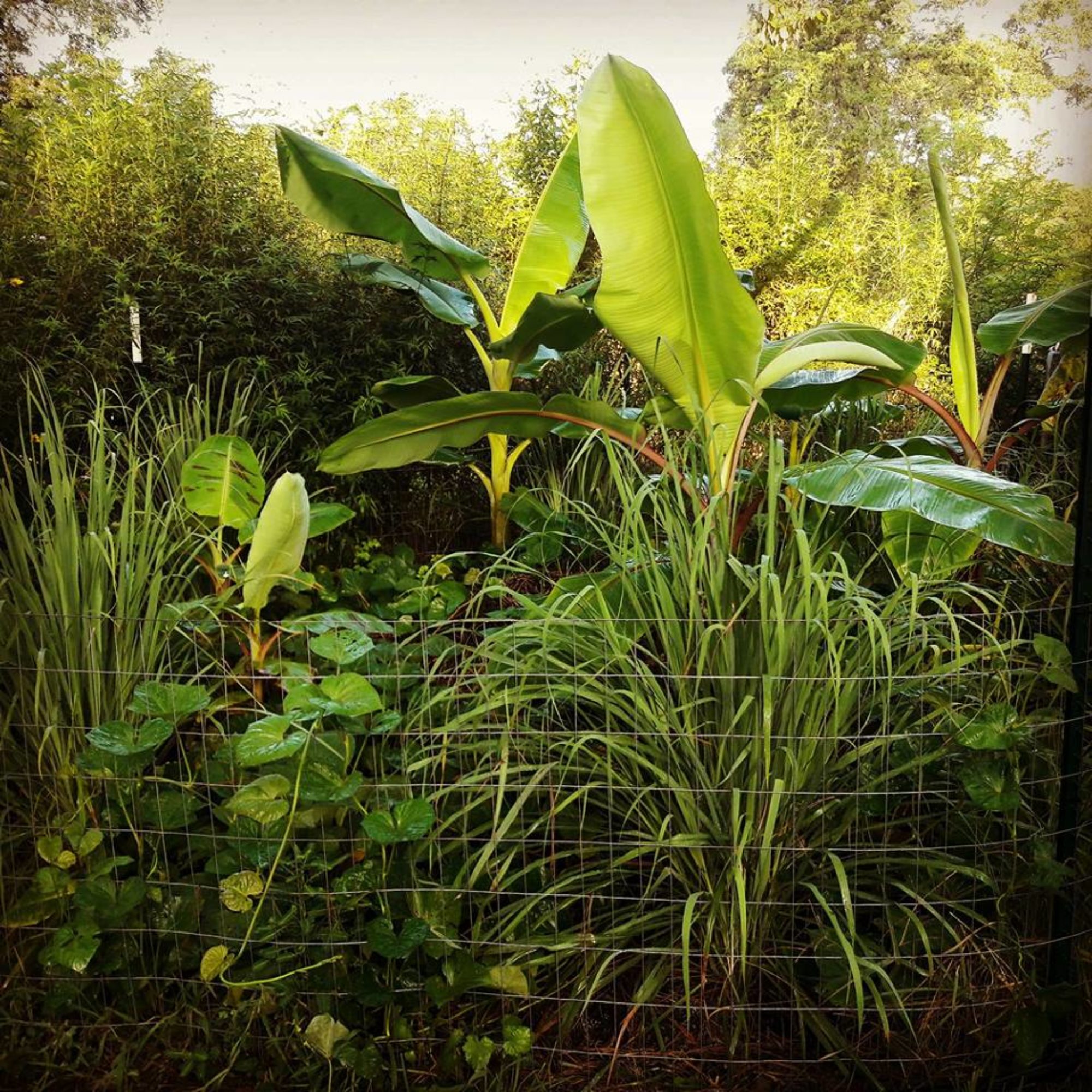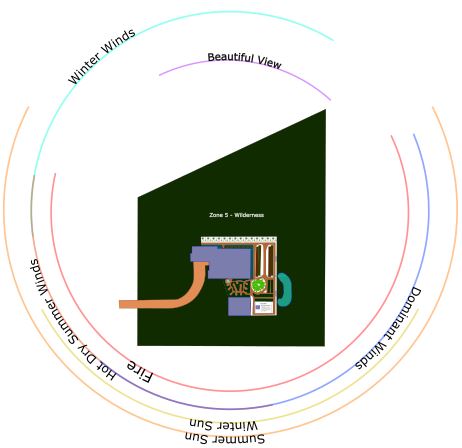Edible Garden with a Custom Landscape Design
A 2 1/2 acre property fully wooded in native trees. The clients just purchased this lot, cleared about a half acre or so and built their dream house. They wanted me to design a fully functioning, self-sustaining edible landscape over their entire cleared area. They want as much production as possible with no grass they must maintain! Perfect opportunity for a permaculture design.
Zone 1 in this design is broken up into 2 different areas. The area to the north is just outside their outside covered patio where they’ll be enjoying family and eating dinner every night. This area has natural and beautiful grasses that don’t need cut except to be trimmed down at the end of each growing season. I have included citronella to help repel mosquitos as well as lemongrass for a similar effect and for culinary purposes. Then there are other grasses like pink muhly grass and dwarf fountain grass and a row of daffodils and other bulbs to provide early bee food and help block encroaching sprawling weeds. This area will also include some potted plants of the customer’s choice as well as be used for mulch production for use in the gardens and food forest. This will mostly be planted to comfrey, buckwheat and alfalfa since they are not only just mulch plants but are nitrogen fixers, dynamic accumulators and beneficial insect attractors.

The other Zone 1 area is just outside the kitchen and includes an herb spiral just outside the door and a mandala styled kitchen garden that winds along on the path to the garage, with a bridge over the dry creek.
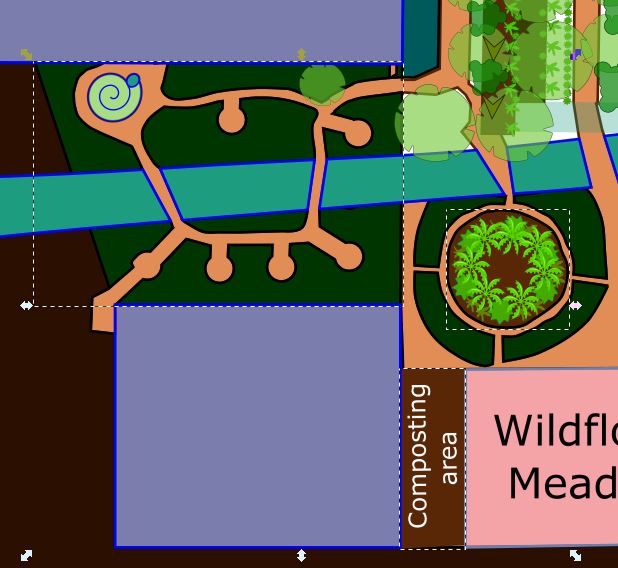
A dry creek was planned to help with run-off during extreme rain events and will be planted out with hardy species including many Mediterranean herbs to encourage pollinators and beneficial habitat for frogs, lizards, bees, predatory wasps, etc. This dry creek will have diversion drains that retain water underneath all gardens in close proximity to help with drought proofing and will end in a pond that helps catch and hold even more rainwater to help during our dry spells.
As we move further out from the kitchen garden, we find a banana circle, surrounded by a medicinal herb garden. Behind that is the main crop garden where staple crops that take longer to grow and require less attention, such potato, corn, carrots, etc. can be grown. Behind that will be a hugelkultur mound that will be planted to bigger vining crops like squash and watermelons. A greenhouse was also included to help them save money by not having to buy started plants and also to have the ability to grow plants not common in their area by buying seeds online.
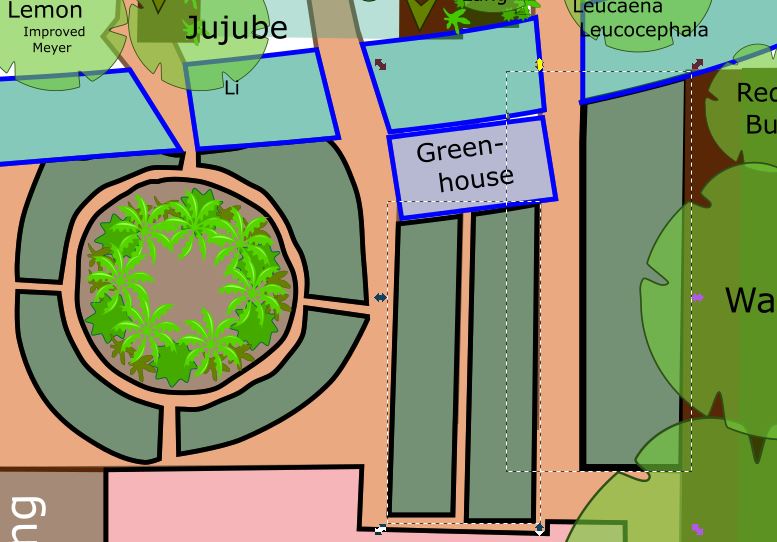
Behind the house and connected to by paths from the north side of the house to the south side is a swaled food forest that will absorb roof rainwater. I have also planned a mushroom growing area in their wooded area.
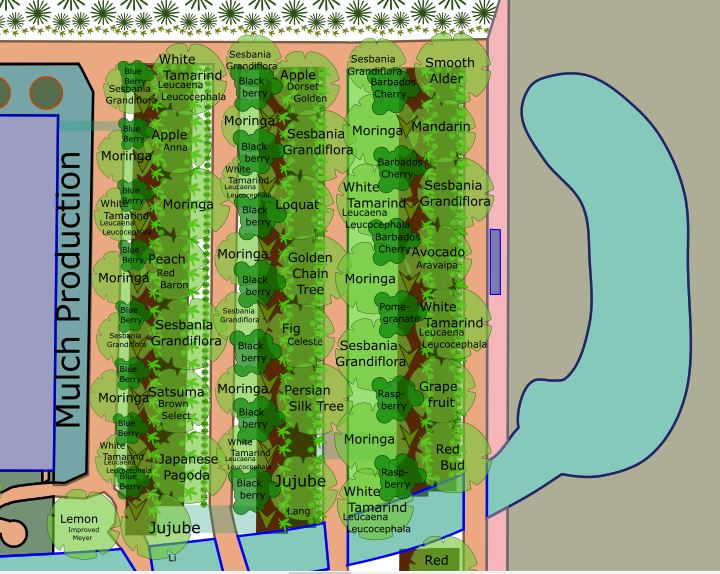
Chickens and ducks will be included in the future and will be located behind the barn. This is not currently shown in the plan because we still need to figure out the spray from the septic which is in the area but has not yet been used since the house is still being built.
Habitat for native bees and bats have also been included in the design for maximum pollination and pest management.
[TheChamp-FB-Comments]
